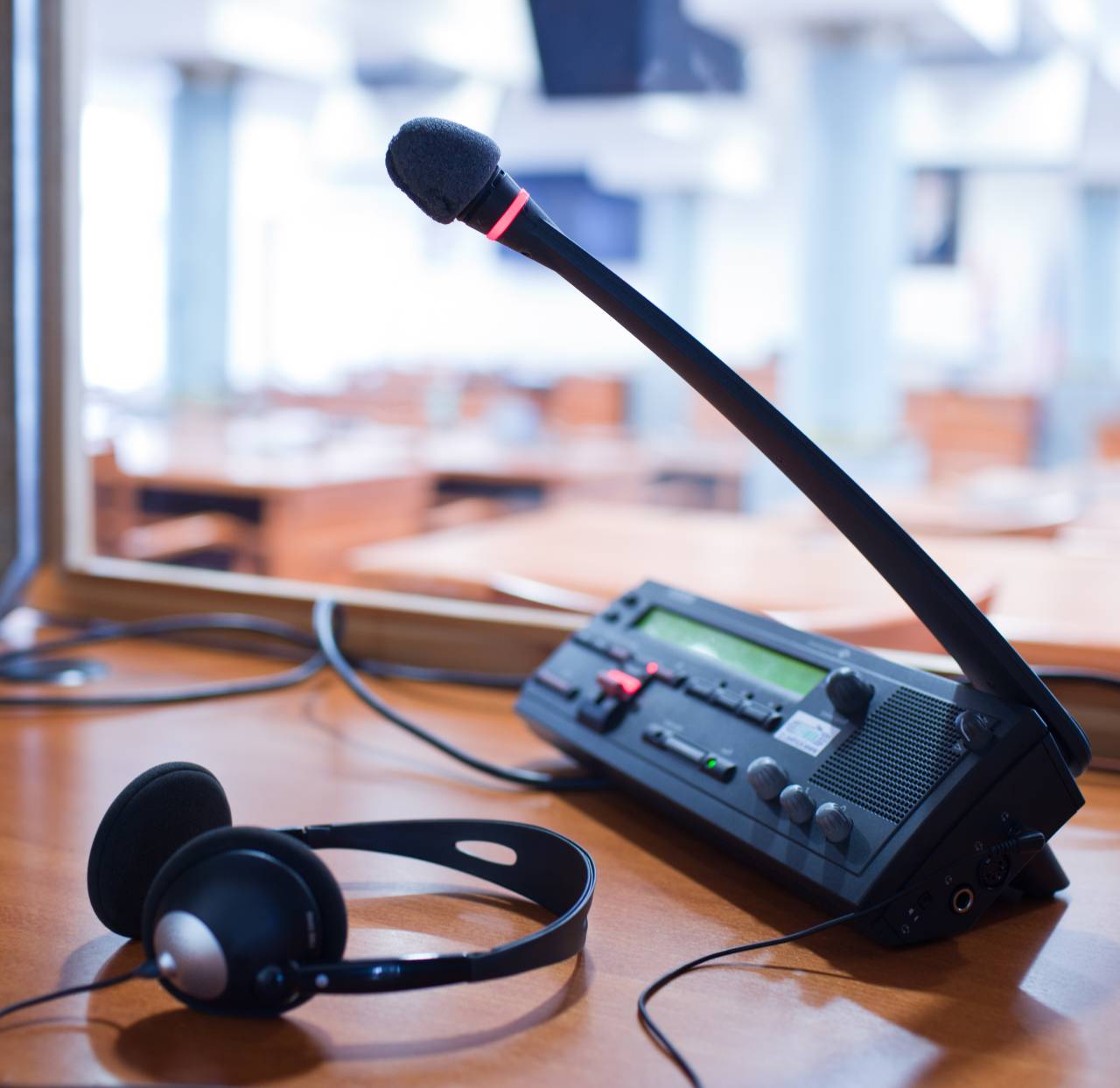Interpreting Services
Simultaneous interpreting
In simultaneous interpreting, the interpreter renders the message in the target language almost simultaneously as the source language speaker speaks, with a few seconds delay. Sitting in a sound-proof booth, the interpreter speaks into a microphone, while clearly seeing and hearing the speaker. Simultaneous interpreting is a complex mental activity which requires a high level of concentration, during which listening, analyzing the content, anticipating and translation have to be carried out parallely.
Unlike consecutive interpreting, when the interpreter has time to think over the phrase or may ask to repeat something misheard, the simultaneous interpreter has no such opportunities, which is why preparation is obligatory (and thus provision of documents for preparation) to avoid misunderstandings or omissions.
Consecutive interpreting
In consecutive interpreting, the interpreter speaks after the source language speaker has finished speaking. The speech is divided into segments (up to 20 minutes) and the interpreter takes notes as the speaker progresses through the message.
Whispered interpreting (Chuchotage)
The interpreter sits or stands next to the small target language audience and whispers a simultaneous interpretation. This method requires no equipment but due to an increased level of noise, it can be stressful and demanding.
In should be borne in mind, however, that the foremost principle of translation is that it is the meaning, not the words that is being translated. Although the controversy over literal vs. free translation has been present for centuries, it was already St. Jerome, the patron saint of translators, interpreters and librarians who in the 4th century AD wrote:
“Now I not only admit but freely announce that in translating from the Greek -- except of course in the case of Holy blockedure, where even the syntax contains a mystery -- I render, not word for word, but sense for sense.” (Robinson, 2002:25)

